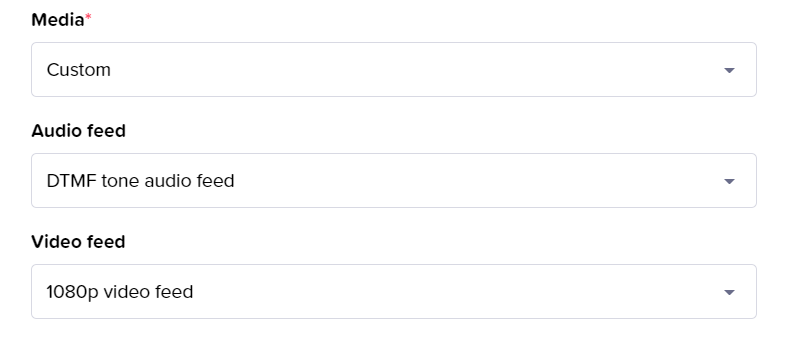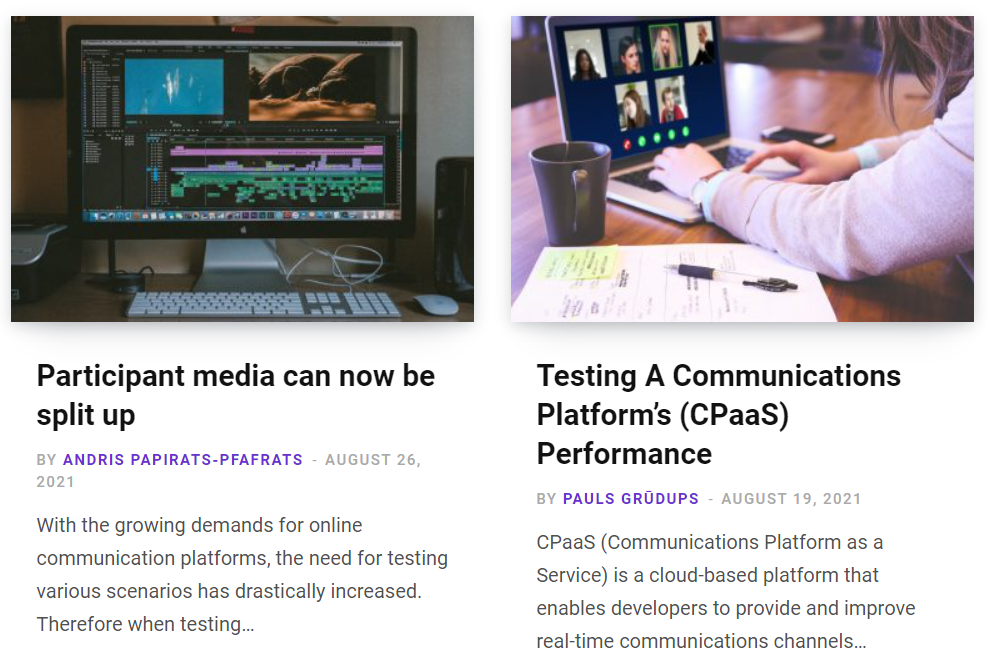August was a month with multiple vacations in our team, but it didn’t make our work lag. Some important changes were made last month and we are glad to announce how we improved our tool recently and what you can do to make your Loadeo tests even better, more relevant and insightful.
Added support for choosing audio and video feeds separately
Loadero is used by many of our customers to test video calling, video conferencing and other types of applications that use WebRTC. While we work to provide features for different web applications testing, we pay attention to what we can do to offer a better WebRTC testing tool too. This month we made changes to the built-in media that we provide for simulating mic and camera inputs of real users by test participants. Previously you could choose one of our 14 preset audio and video feed configuration combinations that ranged from 240p to 1080p with some audio options. We received requests to add more media type options frequently, so we introduced a new option.
If you configured a new test participant recently, you might have noticed that a new “Custom” option was added to the list of media available. Choosing the option will reveal 2 more input fields containing separate audio feed and video feed options that can be configured as you desire. You can find information about all the available audio and video options in our wiki. This drastically increases the number of possible combinations of audio and video feeds available for testing. We also published a blog post about using this new feature recently, make sure to read it if you plan to use our built-in fake media in your tests.

Mozilla Firefox 91 can be configured for test participants
As always, once a new version of browsers that we use is released, it is added to Loadero as soon as possible to let our users test their application performance in it. In August we added support for Mozilla Firefox 91. Currently, the latest browser versions available are Mozilla Firefox 91 and Google Chrome 92.

Post-run asserts value units updated
One of the frequently used features to analyze an application’s performance is the post-run assertions that Loadero has. If you don’t have them set in your tests yet, make sure to learn how to add them and use the assertions to your benefit. In August we made some changes to the assert expected value units to make them easier to use. You can see the list of the used measurement units for all the assertions in Loadero in our wiki.
If you have assertions set in your tests already, this update requires no action from your side, all the expected values have been updated according to the new measurement units automatically.

New blog posts to help you use Loadero
Two new posts have been published in our blog in August. We already mentioned one of them that describes how to use the new Custom media type and what new built-in media options are available now. Another one is about testing a communication platform’s performance with Loadero. Our customers use Loadero to test video communication APIs and CPaaS, so we decided to create some content focused on such testing. One of our engineers wrote about what’s important in testing CPaaS, what types of tests should one consider and added a step-by-step plan to prepare and start creating performance and load tests for a communications platform. If you are just planning or already are testing a CPaaS or a communications APIs, make sure to read the post, you should find it valuable and insightful.

There are a lot more features and ideas we are working on. As summer has ended, we had a great rest and are ready to work even harder making Loadero a web applications testing tool that fits your needs. We’d appreciate it if you can help us with that by sharing your feedback about our tool or letting us know what features do you lack and would like to see in Loadero in the future. So feel free to share your thoughts with us.





